Attraction of Kashi
Discover Kashi: Where Tradition Meets Tranquility
Attraction of Kashi
Discover the timeless charm of Varanasi, one of the world’s oldest cities, with a 2-night journey from New Delhi. This enchanting trip offers a unique opportunity to explore the city’s rich history and spiritual heritage. You’ll be treated to morning and evening boat rides on the sacred Ganges River, allowing you to witness the mesmerizing Ghats – the historic stone steps along the riverbank where generations of devotees have engaged in rituals, bathing, and cremations. During your visit, you’ll also have the privilege of being guided by an expert who will unravel the intricate tapestry of India’s three ancient religious traditions: Hinduism, Buddhism, and Jainism.
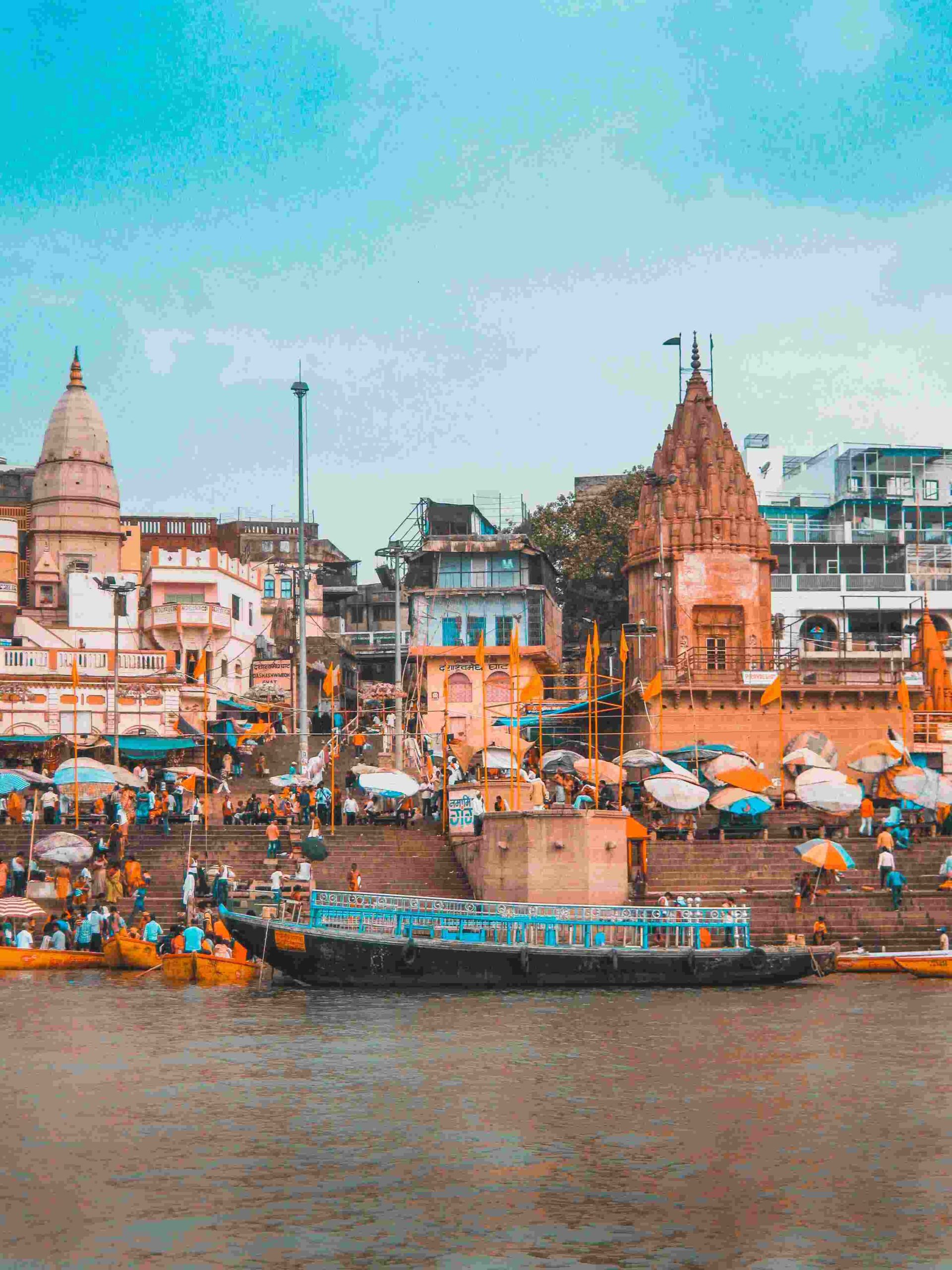
Ghats
Varanasi’s heartbeat resonates along its seven-kilometer riverfront, adorned with approximately 100 bathing Ghats hugging the western bank of the Ganges. These Ghats serve various purposes, from ritualistic bathing to the cremation of the departed. At Manikarnika Ghat, a belief persists that cremation here guarantees a secure place in the afterlife, as the cremators of this Ghat are believed to be under the divine patronage of Lord Shiva. Upstream, Assi Ghat marks the sacred confluence of the Ganges and Assi rivers, and legend has it that it was formed by the descent of Durga’s sword after defeating demons. Nearby, Tulsi Ghat bears witness to the life of Goswami Tulsidas. Each Ghat, such as Hanuman Ghat and Dashashvamedh Ghat, tells a unique story and plays a distinct role in the lives of those who gather there.
Bharat Kala Bhavan Museum
Nestled within the B.H.U. campus, the Bharat Kala Bhavan Museum is a treasure trove of Buddhist and Hindu sculptures, paintings, and archaeological relics. Established in 1920, it showcases a fascinating range of exhibits. Notably, its main hall features a sculpture of a man, standing on one leg, holding a mass of stone aloft with one hand – a portrayal believed to depict Lord Krishna lifting Mount Govardhana. The museum’s collection predominantly highlights the Krishna cult’s presence in Kashi during the 15th and 16th centuries.
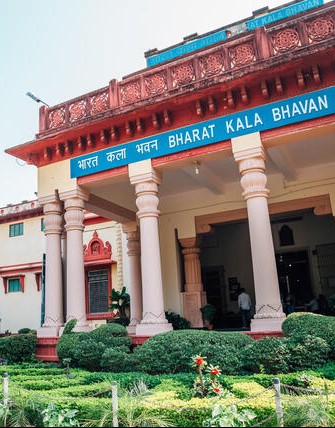
Banaras Hindu University (B.H.U.)
As the largest residential university in Asia, B.H.U. serves as a center for the study of Indian art, music, culture, philosophy, and Sanskrit. Its campus, spanning five square kilometers, houses 55 hostels and an array of attractions. The Bharat Kala Bhawan within the campus boasts a splendid collection of miniature paintings and sculptures dating from the 1st to the 15th centuries. Other gems on the campus include the Birla Mandir, the Sayajirao Gaekwad Library, and the Sir Sunder Lal Hospital with 1,000 beds. Besides the concrete structures, the campus features open spaces, lush greenery, and the presence of India’s national bird, the peacock, which gracefully roams almost every corner.
Shri Kashi Vishwanath Mandir
The history of the Vishwanath Temple, also known as the Golden Temple, is a saga of resilience against invaders. This sacred site has been constructed, razed, and resurrected multiple times over the centuries, enduring onslaughts from Afghans, Turks, Rohila, and Marathas. Bakhtiyar Khilji’s destruction in the 13th century marked the temple’s initial downfall, with later rebuilding efforts. Emperor Akbar generously donated villages to the temple trust, an endowment later curtailed by Aurangzeb’s fundamentalist rule. In 1776, Rani Ahilyabai Holkar of Indore orchestrated the construction of the present-day temple, and the iconic gold-plated towers were donated by Maharaja Ranjit Singh of Lahore.
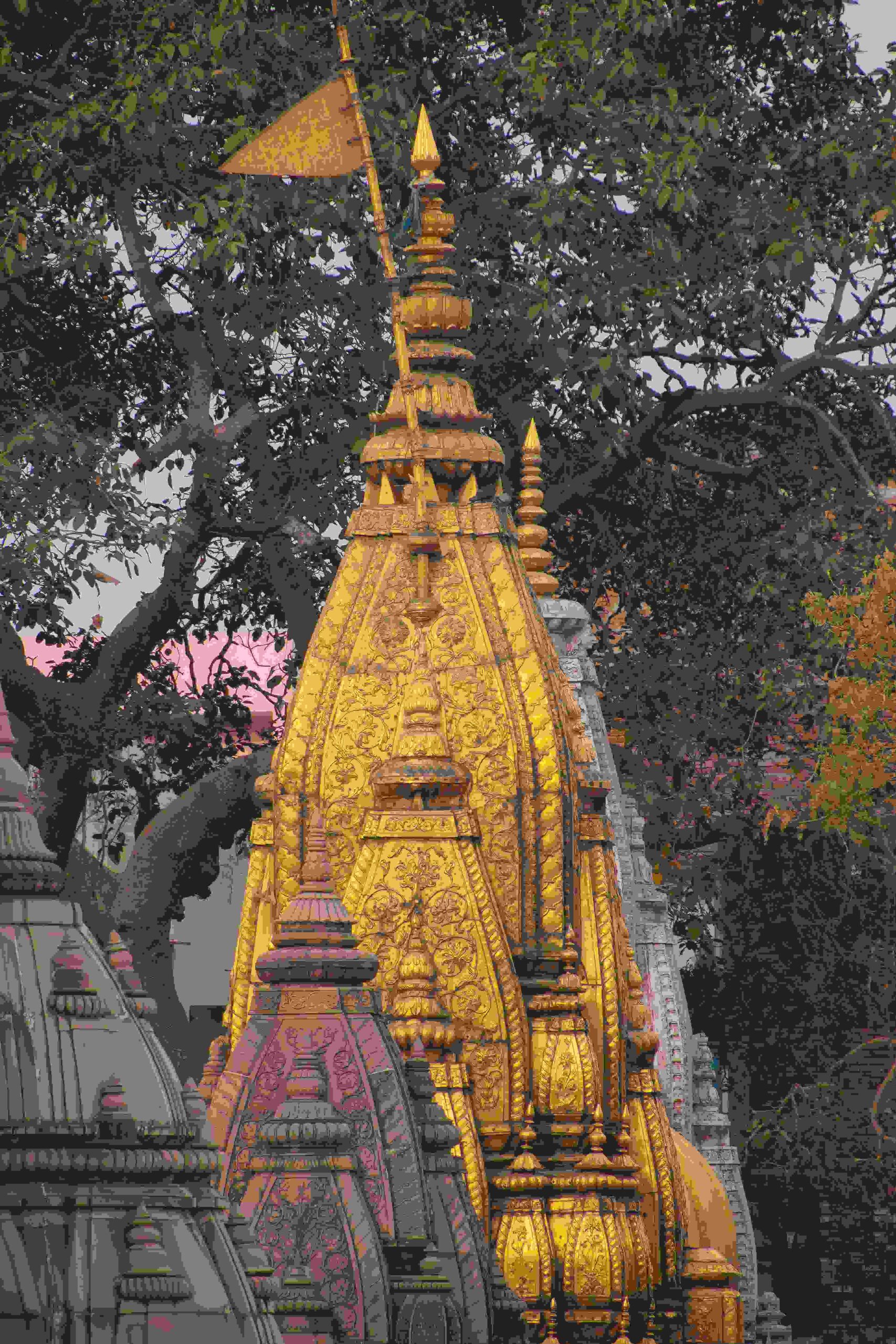
Durga Temple
The Durga Temple, constructed in the 18th century, holds a pivotal place in Varanasi’s spiritual landscape. Its distinctive red and ochre hues and North Indian Nagara-style architecture distinguish it. The temple’s multi-tiered spires, diminishing in diameter as they rise, lend it a unique architectural character. Though it differs from the South Indian Gopuram pattern, it exudes its charm. Recent locals have affectionately dubbed it the “Monkey Temple” due to the mischievous monkeys that inhabit the temple’s surroundings.
Sankat Mochan Temple
While the Sankat Mochan Temple may lack deep historical significance, it’s a must-visit spot. Its origins remain shrouded in mystery, and it started as a modest structure. Over time, various ‘Mahants’ collected funds to expand it, and today it stands as a substantial complex. The temple offers a range of facilities for devotees, including an inn for overnight stays. The temple’s highlight is the famous “Pratah Aarti” at dawn (5 AM) and the “Sandhya Aarti” in the evening (8:30 PM), with the “Rathri Aarti” concluding at around 10 PM, followed by the closing of the temple gates.
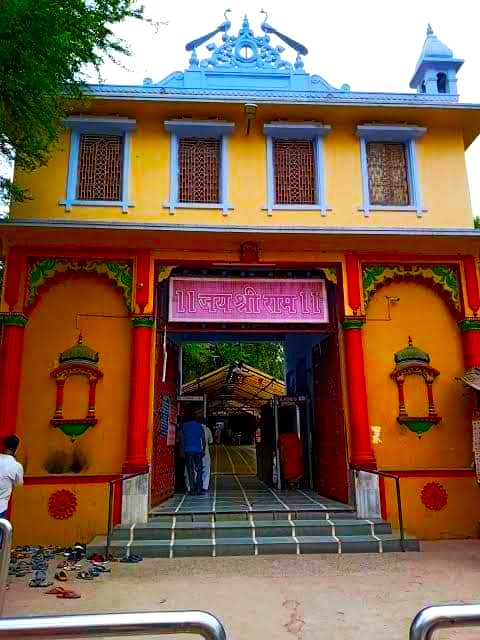
Tulsi Manas Temple
The Tulsi Manas Temple is not only a significant place in Varanasi but holds cultural and historical importance for all of India. This is where the revered poet Goswami Tulsidas composed the Hindu epic “Ramayana” in Hindi, making it accessible to the masses for the first time. Prior to his work, the “Ramayana” was only available in Sanskrit, beyond the reach of the common people.
Annapurna Temple
The Annapurna Temple pays homage to the Goddess Annapurna, the provider of sustenance and prosperity. Legend has it that Shiva and Goddess Annapurna made an agreement: while Shiva would ensure people received moksha (freedom from the cycle of birth and death), Annapurna would ensure that no one in the sacred city went hungry.
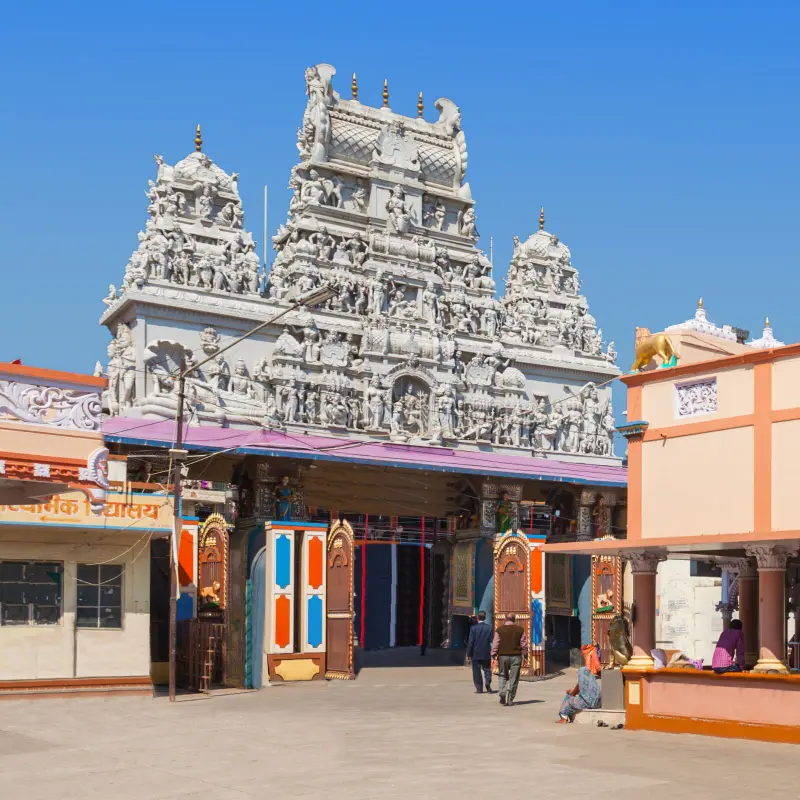
Sakshi Vinayaka Temple
Varanasi boasts about 56 temples dedicated to Lord Ganesha, with the Sakshi Vinayaka Temple being one of them. Lord Ganesha, symbolized as the elephant-deity riding a mouse, is one of the most revered and widely recognized deities in Hinduism.
Bharat Mata Temple
The Bharat Mata Temple, nestled in the Mahatma Gandhi Kashi Vidyapeeth campus, stands as the sole temple dedicated to Mother India. Built in 1936 by Babu Shiv Prasad Gupt and inaugurated by Mahatma Gandhi, it houses a unique marble relief map of undivided India, representing its mountains, plains, and oceans – a symbol of national unity.
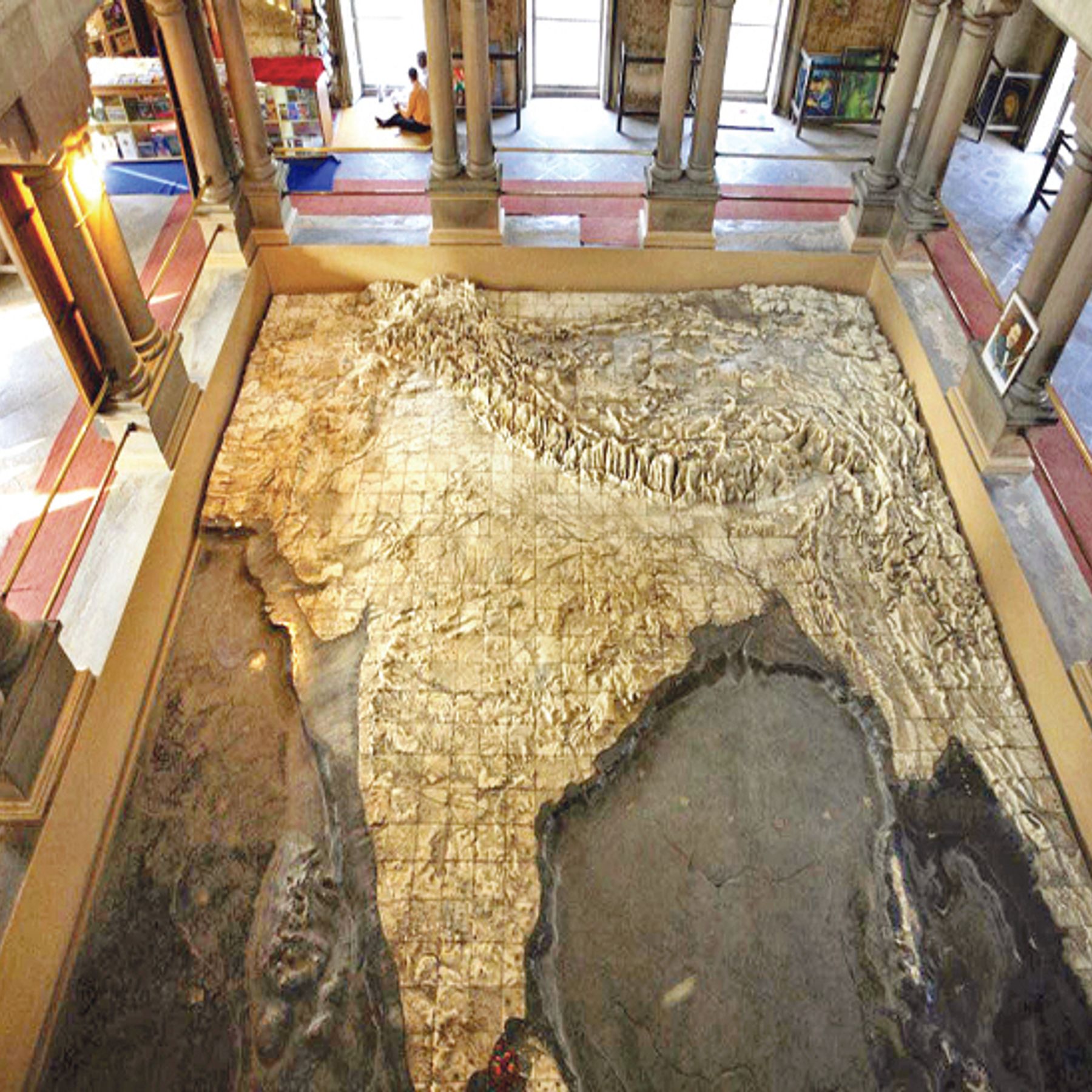

DS Residency HOme stay
Your journey through these captivating attractions in Varanasi promises to be an enriching exploration of history, spirituality, and culture, unraveling the deep-rooted traditions that have thrived in this ancient city for centuries.
